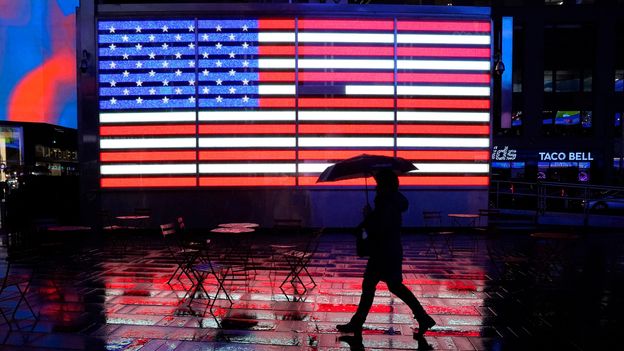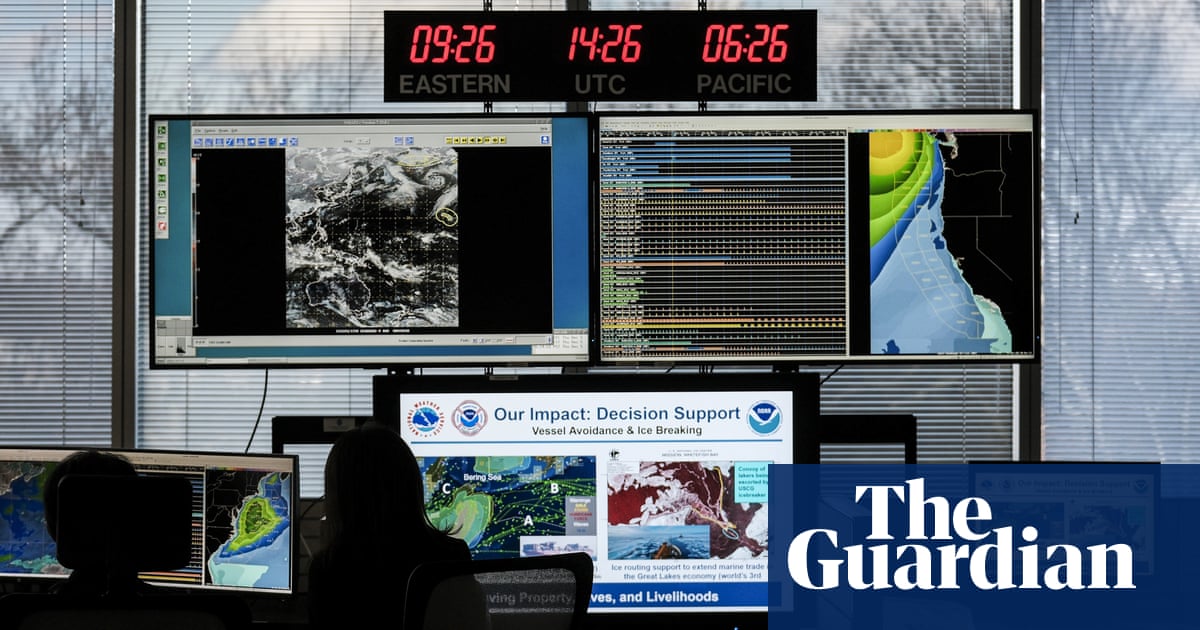Jim East
- 110 Posts
- 30 Comments

 2·2 days ago
2·2 days agoTo be clear, the vast majority of the soybeans produced in the Amazon (and elsewhere) go towards “livestock” feed, so buying edamame or tofu isn’t really contributing much (if at all) to Amazon destruction, Atlantic Forest destruction, Cerrado destruction, or any other soy-related destruction in Brazil.

 2·2 days ago
2·2 days agoarchived (Wayback Machine)
record annual jump cited (Wayback Machine)
Please note that this article contains questionable arithmetic:
That brings the annual mean global concentration close to 430 ppm, about 40 percent more than the pre-industrial level, and enough to heat the planet by about 2.7 degrees Fahrenheit (1.5 degrees Celsius).
The actual figure from NOAA is 428.15 ppm (last updated 2025-04-14). If we use the more precise pre-industrial estimate of 278 ppm, then we get an increase of 54%, which is indeed “about 40%” if we round to the nearest multiple of 40%.
Climate models tend to underestimate the cooling effect of aerosol pollution, and the climate sensitivity is actually about 50% greater than previously thought, so a more realistic estimate of the warming caused by a doubling of carbon dioxide concentration over the pre-industrial level is 4.5°C. If we assume that the relationship is linear, this means that the current level of 428.15 ppm is “enough to heat the planet” by 4.5°C * 54% = 2.43°C, which is… more than 1.5°C.
the 2023-2024 spike of the global average surface temperature, which has also not been fully explained

 101·3 days ago
101·3 days agoGitHub
Windows
privacy
Pick two and call me back.

 41·3 days ago
41·3 days agoSome highlights:
Far-right authoritarian pundits and political actors, from Matt Walsh to Elon Musk, all seem to have gotten the same memo instructing them to fixate on “low” fertility and birth rates. Musk has claimed that “population collapse due to low birth rates is a much bigger risk to civilization than global warming” and that it will lead to “mass extinction.” Some liberals are flirting with this narrative, too.
In her Atlantic piece, Bruenig argues that the left should claim the right-wing birth-rate rhetoric in order to justify putting forward modest welfare policy increases. Well, at least for those who have children. But at the same time, instead of taking a moment to wonder if Millennials having fewer kids will really lead to human extinction, she unfurls her banners and from the parapet declares triumphantly: “humankind is excellent—the paragon of animals”! This is a pretty unequivocal reinforcement of a particular human supremacist ethic. This ethic, also gleefully championed by fascists like Matt Walsh, is central to the value system currently annihilating life on earth and is apparently shared by every commentator on this issue. This idea can be found running through not just Bruenig’s leftism and Walsh’s rightism, but through Ezra Klein’s centrism as well. His “abundance agenda” espouses spreading human development and quietly accepting the demise of all the wildlife that would have otherwise inhabited the land being developed, or whose habitat will suffer the consequences of expanded fossil fuel energy systems, like catastrophic climate change.
But the bigger problem with Walsh’s argument is that it only makes sense if you care about the quantity of human life more than the quality of human life. Sure, it is technically low cost to impregnate someone. But in the U.S., providing a stable, healthy, safe, and enriching upbringing for a child has become increasingly difficult due to rising costs of living, stagnant wages, and disinvestment in public goods and services. When someone is making a choice about whether to have a child, they ought to be anticipating loving that child and wanting the best for them. So a rational person should look at the conditions in which the child would be raised and make an educated judgment about whether they would be able to provide safety and stability. The world as it is simply contains a scarcity of these things, and they are diminishing thanks primarily to the actions of leaders committed to Walsh’s ideology.
When authoritarians bemoan falling birth rates, they’re not really concerned about children’s health and well-being or about imminent human extinction. They’re concerned with maintaining a certain system of production that is dependent on cheap, abundant, and disposable labor.
Essentially, Cowen is suggesting eliminating programs for the elderly and the poor and diverting that money to subsidize childbearing people. His mention of Christian Science is telling, as adherents of this sect tend not to live as long as the general population. He doesn’t say it explicitly, but by focusing on eliminating welfare for older and poorer citizens, he is advocating for a demographic strategy of producing lots of offspring and letting the ones he deems less evolutionarily fit, mainly the older and poorer, die off. This is called “r-selection” among other species. It’s a strategy used by creatures, like some rodents, fish, and insects, often when there is environmental scarcity of resources. Apparently it’s a strategy that Cowen sees fit for humans. We need to call this what it is: a clear example of 19th-century social Darwinism and a grim case of, like Walsh, another far-right authoritarian advocating for quantity of human life over quality of life. It is a view of life that is fundamentally incompatible with maximizing well-being, health, and happiness for all.
Whether delusion or propaganda or both, “demographic collapse” is a false problem. The fact is, the human population will absolutely never disappear due to a low fertility rate, unless there is some environmental impact on the physiological ability to reproduce.7 This is not impossible, given all the known and unknown effects of chemicals and plastics permeating the environment, which are already negatively impacting hormones and reproductive health.8 Microplastics have been found in every human testicle—and region of the planet—where they’ve been looked for. But even with these pressures, the human population continues to grow (while wildlife continues to decline).
If the quantity of human life does one day stop growing and actually starts to decrease, it is likely that, in many places, if history is any guide, the quality of human life will be fine and could even increase with it. Perhaps more importantly today, the quality and quantity of non-human forms of life—which, unlike Musk’s mass-human-extinction lie, are in a state of actual mass extinction—would receive a vital respite. More forms of life would have more good opportunities to exist. As with many other issues, if the right wing’s greatest fears were to come true, it would almost certainly be fine for everybody… except, maybe, a few oligarchs.

 1·4 days ago
1·4 days agoPartly because many recently deforested areas (mainly in Mato Grosso) were “legally” reclassified from Amazon to Cerrado. Either way, there is still massive deforestation going on, no matter how anyone manipulates the statistics.
THIS is the actual definition of Veganism, directly from the people who coined the term:
That definition is from 1988, so it’s questionable whether it came “directly from the people who coined the term” in 1944. Here is a re-publication of the 1951 Leslie Cross definition:
“The object of the Society shall be to end the exploitation of animals by man” and “The word veganism shall mean the doctrine that man should live without exploiting animals.”
Allegedly someone read The World Peace Diet (by Will Tuttle) to Donald Watson on his deathbed, and Donald Watson said that the book encompassed everything that he intended when he founded the Vegan Society. Make of that what you will.

 1·14 days ago
1·14 days agoProbably ‘Silk’, AKA Latundan, from the Philippines.

 1·15 days ago
1·15 days agoLet us not forget that this is primarily due to deforestation, whether directly (due to loss of tree cover for moisture retention) or indirectly (due to climate change).

 1·15 days ago
1·15 days agoWe need both, obviously. Ending animal agriculture is the most practical way to achieve it.

 6·17 days ago
6·17 days agoSomeone has to be the first.

 1·19 days ago
1·19 days agoIs “spikes” a euphemism for durian?
 1·20 days ago
1·20 days agoThe Dunstan chestnut is a traditional hybrid developed decades ago. It wasn’t exactly the same as the original American chestnut (Castanea dentata), but was that really such a problem?

 2·21 days ago
2·21 days agoDid you see this farther down on the same page?
The 1000 Liters of water in the Bathtub corresponds to the 1000 Gigatons of CO2 we have added to the atmosphere since 1750. The inflow of 50 L/m into the bathtub corresponds to the 51 Gigatons of greenhouse gases we are emitting each year. When the Killing machine faucet is shut off, it reduces the net inflow into the bathtub to 5 L/m, a 90% reduction in the inflow, which corresponds to the 87% reduction we expect in real life. The 2000 Liters of Vegan Reforestation potential corresponds to the 2000 Gigatons of CO2 that can be stored through rewilding grazing lands. The 350 Liters in the Aerosols cistern corresponds to the one-third increase in radiative forcing that will occur when aerosols disappear as well as the outgassing of CO2 that will occur from the ocean/land as we reduce CO2 levels in the atmosphere.
To put it another way:
The bathtub basically represents the world climate system. The water in the bathtub represents the greenhouse gases (mainly carbon dioxide, methane, and nitrous oxide) that humans have put into the atmosphere, responsible for the warming of the planet.
The baby represents life on Earth, the majority of which will be killed in a mass extinction if climate change continues too far. This is represented by the baby drowning in the bathtub full of water.
The burning machine represents the burning of fossil fuels (petroleum, coal, natural gas, and all of the related substances like tar sands and oil shale). The faucet on the left side represents the greenhouse gas emissions from the burning of fossil fuels, contributing to climate change.
The “Aerosols” cistern represents the amount of warming that has not occurred due to the cooling effect of air pollution reflecting sunlight back into space. If the air pollution (largely caused by burning fossil fuels) were to dissipate, such as by shifting to cleaner-burning fuels (low-sulphur diesel fuel, for example) or by no longer burning fuel for energy at all (shutting down the “burning machine” in this analogy), then all of the warming cancelled out by the pollution will occur. This is represented by the water in the cistern flowing out into the bathtub; removing the aerosol pollution has the same effect as adding more greenhouse gases to the atmosphere.
The killing machine represents the animal exploitation industries, including but not limited to animal agriculture. The smaller faucet on the right side represents the greenhouse gas emissions of these industries due to deforestation, animal respiration and flatulence, fermentation of waste, and so on.
The drain of the bathtub represents the rate at which forests and other natural vegetation could capture greenhouse gases (mainly carbon dioxide), removing them from the atmosphere and removing their effect on the climate. This only applies if the forests are allowed to grow back, which is currently not the case due to the huge amount of land used by animal agriculture for grazing and the production of feed crops (maize, soya, palm oil, and so on). This is representing by the animal parts and secretions blocking the drain.
The 2000L Vegan Reforestation Potential tank represents the total amount of carbon dioxide that could be captured and removed from the atmosphere, negating its effect on the climate, if the land currently used for grazing cows/goats/sheep/others were allowed to regrow into forest. It is called the “vegan” reforestation potential because in order for that land to be freed from grazing so that the forests to grow back, people need to live vegan.
The climate bathtub model is meant to illustrate that ending the use of fossil fuels without ending animal exploitation would not only not solve the climate crisis, it would immediately make the problem worse due to the reduction in aerosol pollution. It is crucial to first “unblock the drain” by putting an end to the industrial-scale killing of other animals in order to stop the climate bathtub from overflowing and drowning the baby (killing most life on Earth). The order of operations matters. Like algebra class.
Does that help?
!fruit@slrpnk.net welcomes you!
Thank you for sharing such beautiful words of wisdom in these troubled times.

 1·27 days ago
1·27 days agoEven if you cover the whole planet in forests, there is a finite amount of fossil fuels you can burn before it is negated.
I think that this is the crux of the matter, and of course you’re right. The total amount of carbon stored in fossil fuels is (presumably, without searching for the numbers) much greater than the amount currently stored in living organisms, so there is a finite amount of fossil fuels that can be burnt before the carbon emissions exceed the capacity of forests/vegetation to capture it. Do you know what that “finite amount of fossil fuels” would be? From what I have seen, it is quite large, though humanity is rapidly approaching it. What’s needed is for the rate of emissions to be reduced below the rate of capture, and so a reduction in fossil fuel use is urgently needed, but I wouldn’t say that completely eliminating fossil fuel use is more important than protecting forests. All that’s needed in the long term is for carbon capture to at least equal carbon emissions. In the short term, the planet is already close enough to the “point of no return” that reforestation is necessary in order to bring down levels of carbon dioxide, regardless of how quickly fossil use ceases. It has to be both. Burning fossil fuels is not a sustainable way to meet the energy needs of 8 billion+ humans. Cutting down forests for biofuel is not a sustainable way to meet the energy needs of 8 billion+ humans. Deforestation for biofuel would be sustainable for a much larger population than would burning fossil fuels (due to the extremely slow renewal rate of fossil fuels), but we’re past that point. There’s not enough land. Either energy consumption needs to drastically decrease, or non-combustion sources of energy are needed.
I get the impression that we are essentially “on the same side” and just quibbling over details. You make an excellent case against fossil fuels! Looking at it in terms of the broader carbon cycle makes the necessity of ending fossil fuel use very obvious even ignoring any concerns about pollution, destructive extraction practices, or other harmful effects.

 1·27 days ago
1·27 days agoI understand what you’re getting at, but I don’t see it as being so simple.
Fossil fuels are essentially just ancient soil carbon, so in a way, we’re talking about the same thing on different time-scales. My point was/is that the combination of deforestation and burning of the cut biomass actually reduces the amount of carbon that can be stored in the soil on a given area of land, not just releasing it once and then recycling it. To capture the same amount of carbon again would require a greater area under management than the area originally cut. On a finite planet, there is a limit to how much this deforestation for biomass production could be scaled up without net-positive emissions. (I’m tired, so this may not be the most articulate.)
The world’s forests capture a substantial amount of the carbon dioxide emitted by humans, and extensive reforestation could capture even more. By reducing the carbon capture potential of forests, that’s less carbon dioxide absorbed year after year. Over a very long period of time, “releasing it one time” is what burning fossil fuels does: it releases stored carbon once, and then trees and other plants recycle it. Deforestation reduces the recycling.
Even though mature forests can store more total carbon, it seems that young forests, with more small trees, may actually be able to absorb more methane, so there can definitely be some advantage to managing trees for wood production on a short cycle. Methane is a much more potent greenhouse gas than carbon dioxide, so this is one way in which the overall situation is complicated.
Of course, avoiding both deforestation and fossil fuels is even better.
I’m glad that we agree on this point. It doesn’t need to be one or the other. The most effective approach to addressing climate change would involve reforestation and eliminating dependence on fossil fuels by developing clean energy technologies.
Ultimately, carbon capture just needs to match carbon emissions (plus a bit extra at first to compensate for current overshoot), and realistically, it will take both reforestation and a reduction in emissions to achieve that. Ending animal agriculture makes the most progress toward both.















Cow pasture accounts for about 80% of Amazon deforestation since 1970, but feedcrops like soya are still a significant contributor. Animal agriculture excluding cow pasture accounts for an additional 12% of deforestation, and part of that is soya monocultures. Perhaps the bigger problem with soya cultivation in the Amazon is the opportunity cost that is not apparent from the deforestation numbers: it is often grown on former pasture lands that could have otherwise reforested themselves.
That said, you’re right that not buying soybeans from Brazil would have little impact, as the vast majority of the soybeans produced in Brazil are fed to “livestock” animals.